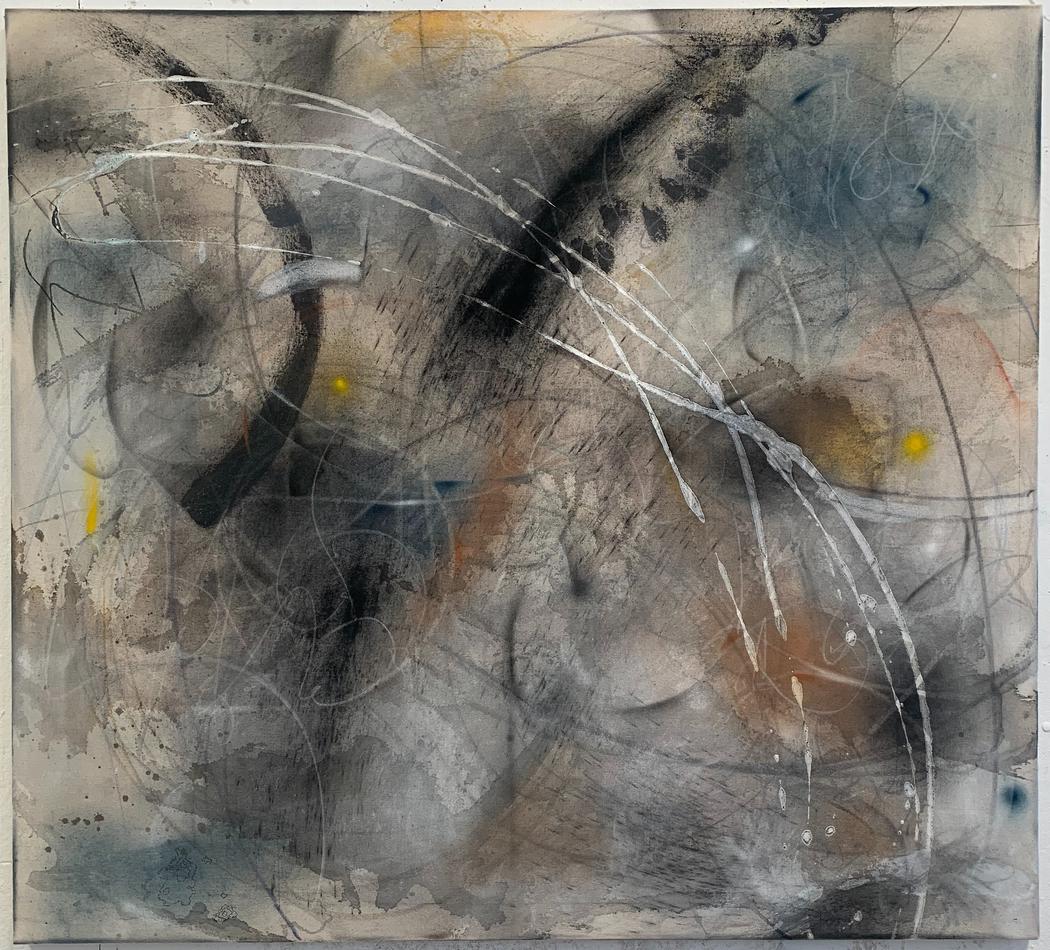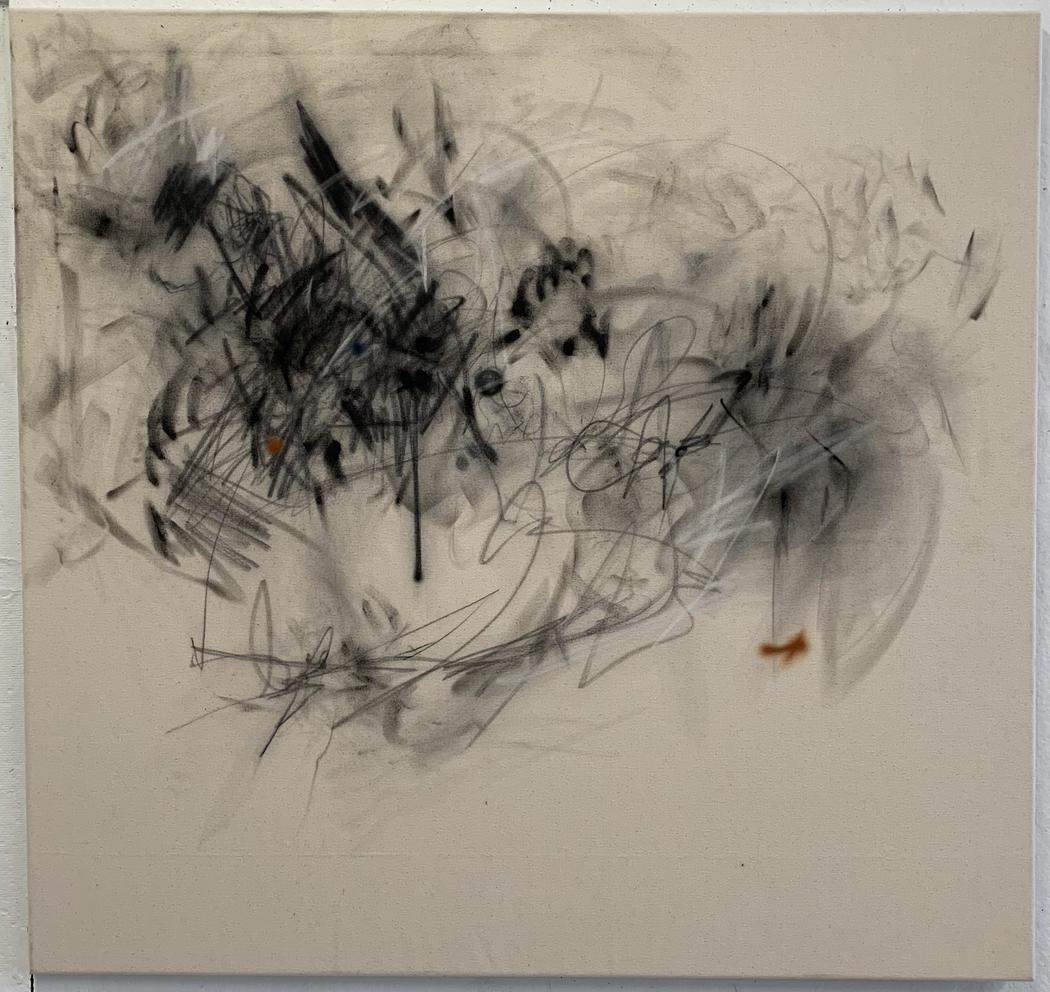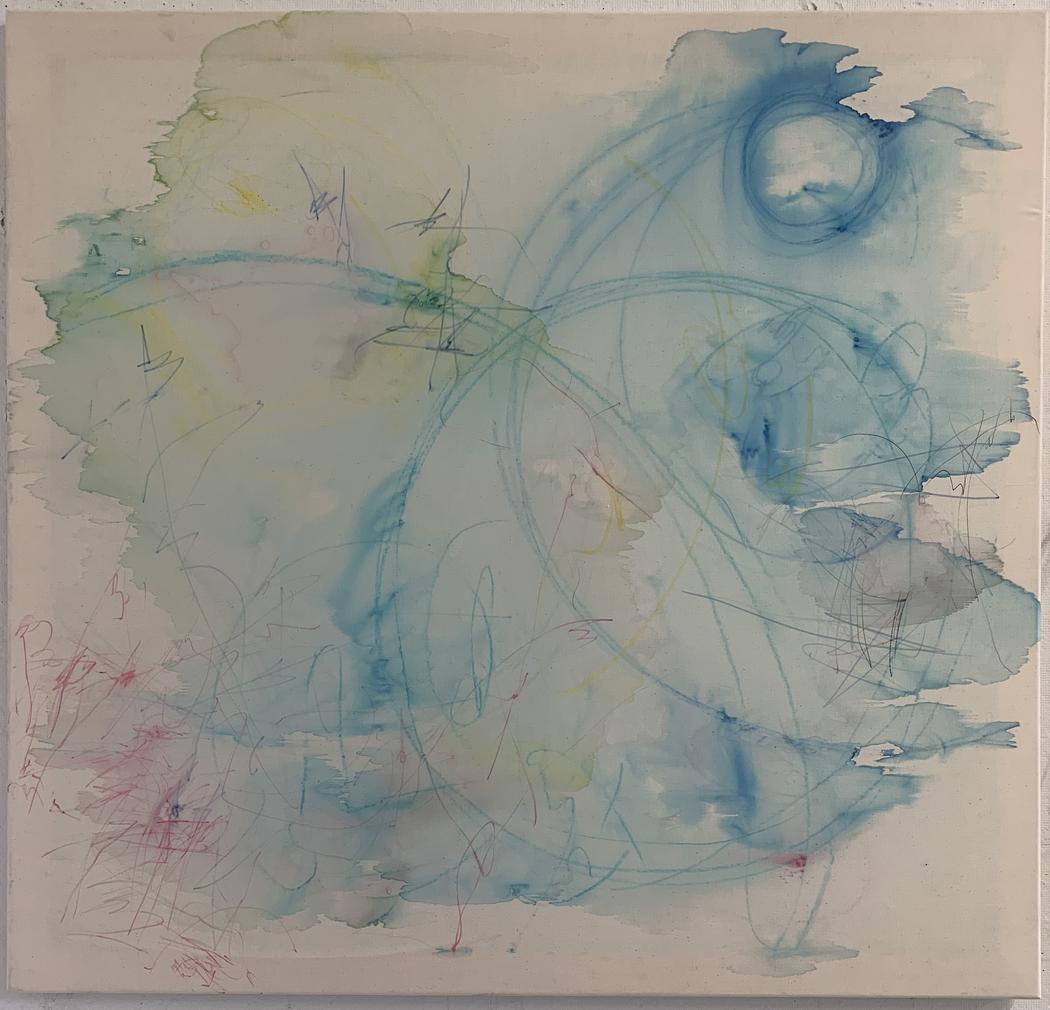Madison Rocap
Where do you live: New York
Your education: BFA in Studio Art from Pennsylvania Western Clarion University (2024); MFA in Painting & Drawing from State University of New York at New Paltz (expected May 2026)
Describe your art in three words: Abstract · Process · Illusionary
Your discipline: Drawing
Website | Instagram
 Madison Rocap | And Then I Blinked | 2025
Madison Rocap | And Then I Blinked | 2025
You describe your work as existing in the space between order and chaos. How do you personally define that “grey area” in your life and art?
For me, the act of making and, honestly, just existing is the “grey area.” It is comprised of intuition, intention, and accident. The variation of experience, whether that be in the artistic process or the ups-and-downs of life, results in an everchanging and evolving ontological state that we cannot define in clear ways. The beauty in the enigmatic, intangible, and unpredictable is the primary inspiration that I work from.
 Madison Rocap | Morpha | 2025
Madison Rocap | Morpha | 2025
You often use mixed media on fabric. What draws you to these specific materials and surfaces?
My process tends to be highly tactile, so the feeling of these materials against my hands is actually a fairly big factor in selecting them. Stains are a fascinating part of my practice and unprimed fabric — whether that be canvas or muslin — allows for some unique interactions with wet and water-soluble media. Charcoal is probably the most prominent material I use for somewhat the same reason: the residual stain it leaves on my person while I work. When I make something, I imbed a piece of myself within the work, and I feel that the materials reciprocate that sentiment. Additionally, there end up being so many interesting interactions between the materials themselves that I cannot account for beforehand; it often feels as though I am conducting miniature experiments every time I work, even if I had used the same technique in my work previously.
How do accidents, fluidity, and material autonomy influence the direction of a piece?
My drawings are shaped around the mindset that the materials have their own independent wills and agency; rather than me just utilizing them, I work with them in a collaborative relationship. I sometimes refer to the materials as “mediators”: an autonomous, conscious role that facilitates communication between myself and the surface. I have found that if I have complete control over everything during the process, perfectionism rears its ugly head, and I remain perpetually unsatisfied chasing the unattainable image in my head. By allowing that space for accidents and material autonomy — handing over control to the process — I can have a visual conversation with the materials instead.
 Madison Rocap | Approaching The Threshold | 2025
Madison Rocap | Approaching The Threshold | 2025
Are there specific memories or personal stories embedded in your mark-making, or do you aim to create more universal emotional reflections?
I find that mark-making is the most honest form of expression, so I am sure that thoughts, emotions, and memories subconsciously arise from the compositions; however, I would say that they can be viewed more so as the obscure context rather than the actual subject of the work. My work forms artificial, ephemeral, intangible spaces to grant viewers the opportunity to feel their own emotions and memories be mirrored in the nonrepresentational marks. There are no preexisting expectations about how people should experience or interpret the work other than being honest with themselves, as I have done in the process of making the art.
 Madison Rocap | An Inkling | 2025
Madison Rocap | An Inkling | 2025
How does your current MFA experience shape or challenge the development of your visual language?
Being in a graduate program has been an amazing privilege, but there is definitely pressure that comes with it. During my first two semesters, the visual language I used developed into something quite different from what I left my BFA program with, but it was only after much contemplation that I realized I absolutely hated what I was making. My work had adapted to become something more along the lines of what I felt people expected of me at that time, rather than something that incited my passion for my specific artistic process. While I look back and would have loved to have made work that aligns with the visual language I employ now, I fully understand that that was a necessary experience for my growth as an artist. Knowing how I actually wanted to move forward, I was able to reignite the fire that pulled me to making work in a specific way in the first place and expand it into something even more complex.
 Madison Rocap | Amidst | 2025
Madison Rocap | Amidst | 2025
Although you are young, your work already explores themes of vulnerability and mortality. What drives those reflections?
Even from a young(er) age, I have always found myself taking time to contemplate existence and the dichotomy of who I am as a person. I am an amalgamation of experiences that constantly fluctuate on the spectrum of “beautiful” and “ugly,” and we as humans are highly complex beings. There were some difficult experiences that I went through growing up that expanded my awareness of the realities of life, while at the same time, I was lucky to have once-in-a-lifetime opportunities that showed how wonderful that life could be, too. I am highly introverted, so in addition to the range of my own experiences, I constantly observe the world around me to deepen my understanding of my own existence. Silence and spending time alone may scare some people, but these are experiences that allow for introspection and acknowledgement of the self. Overall, questioning my place in the world keeps me grounded and honest, resulting in the way my visual language looks today.
 Madison Rocap | A To Be | 2025
Madison Rocap | A To Be | 2025
Is there a message you hope viewers carry with them after experiencing your work — or is interpretation entirely open?
I do not consciously represent specific experiences or emotions as I work, so I love hearing what viewers are responding to, their interpretations, and what they are taking away from the experience. My drawings are process-based explorations of optical effects, space, and movement without any assigned meaning. Through much trial and error, I have accepted that trying to impose any particular representation or significance will be perceived by the viewer as untrue, thus creating a disconnect between them and myself. I have chosen to focus on making illusionary explorations of space and beauty that may spark associations or meaning in the viewer, but only because it comes from within the viewer themselves instead of me.

Leave a Reply